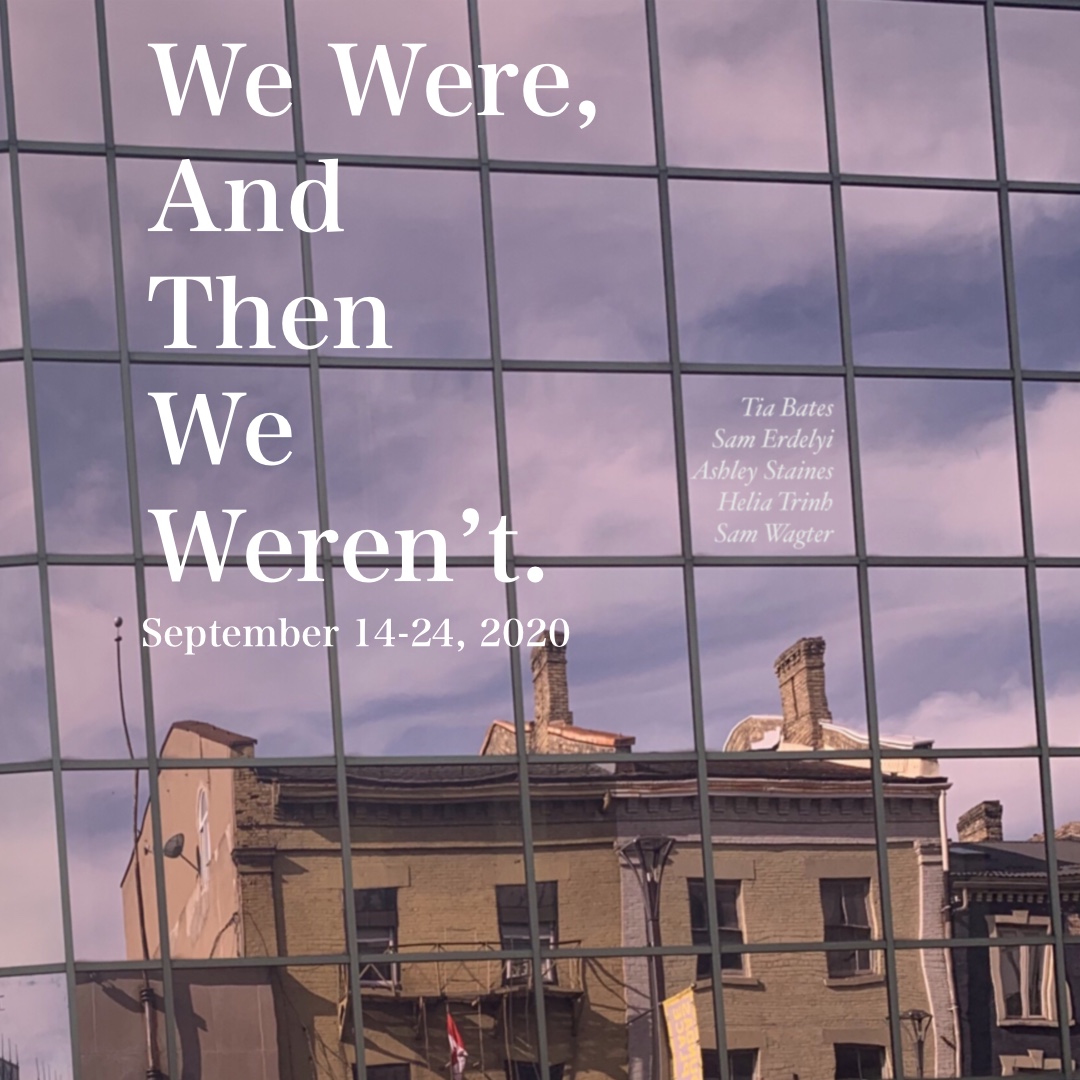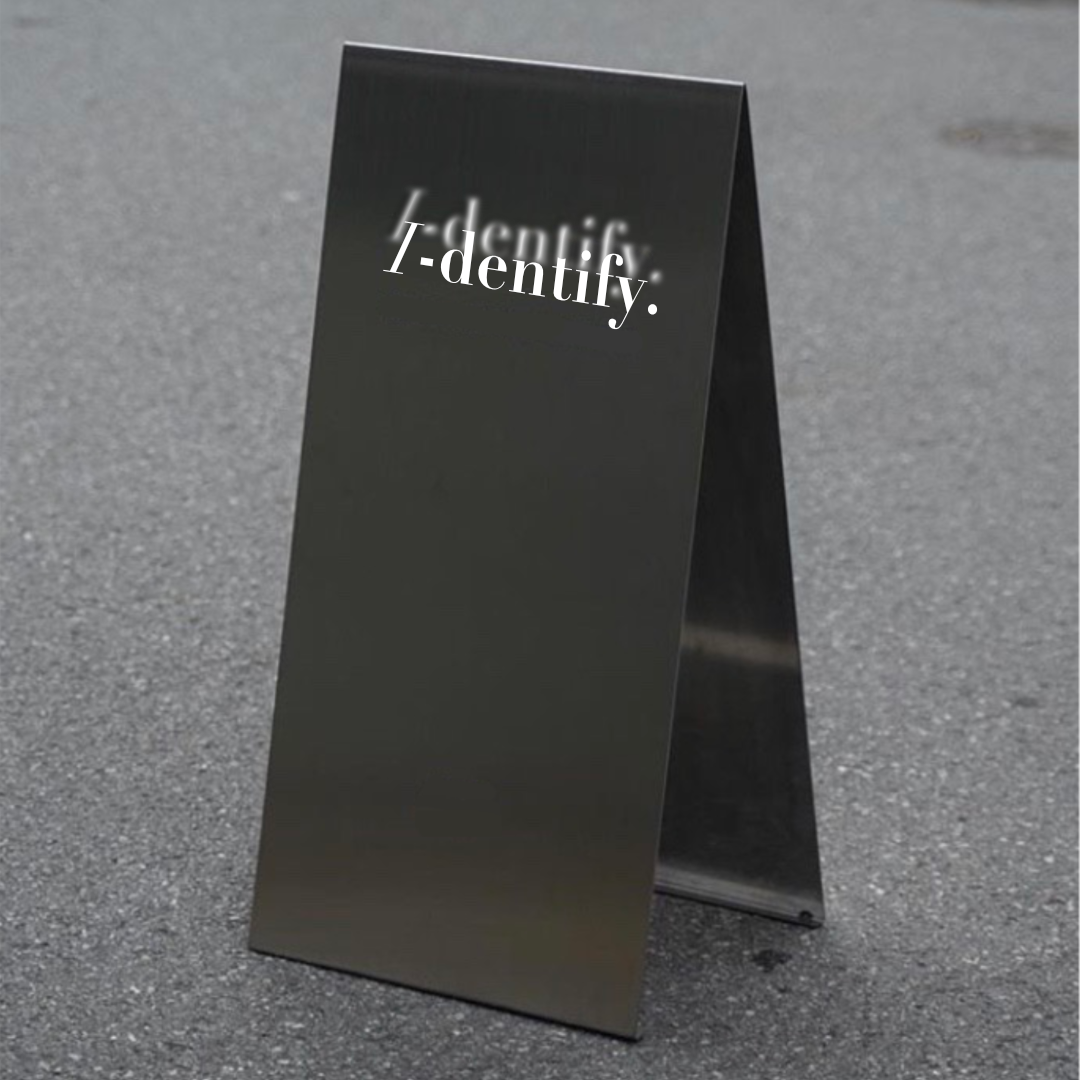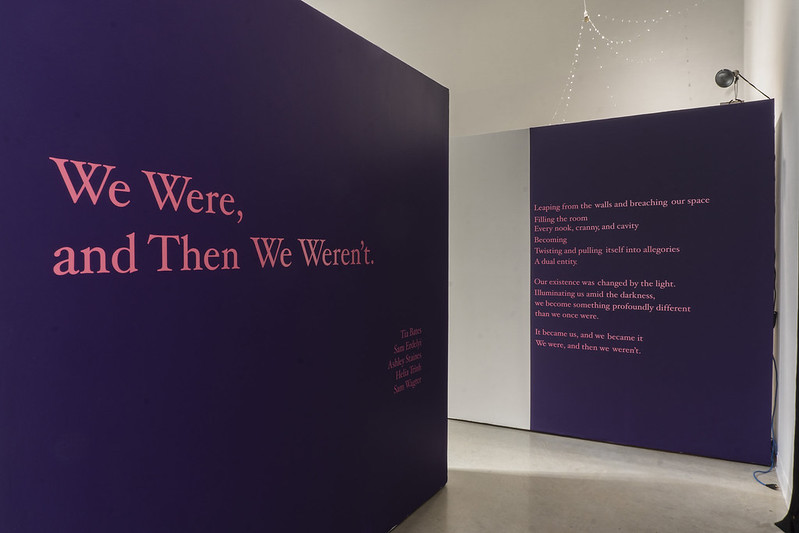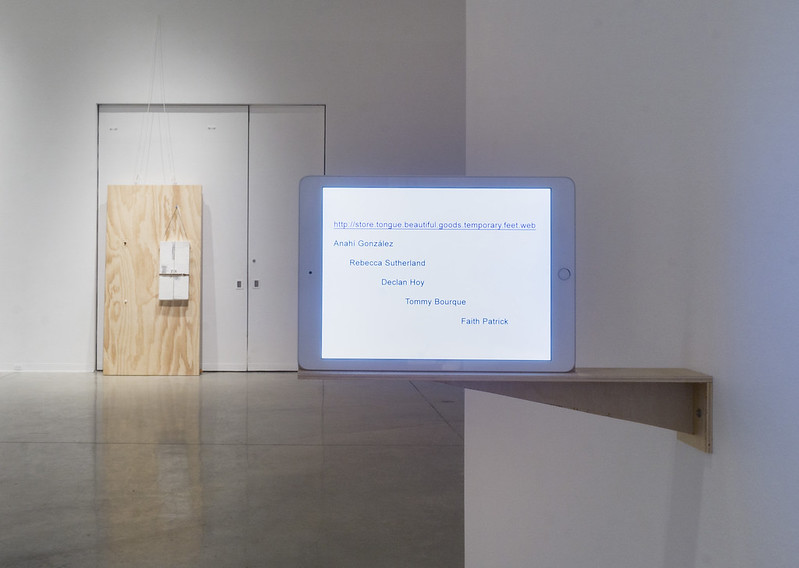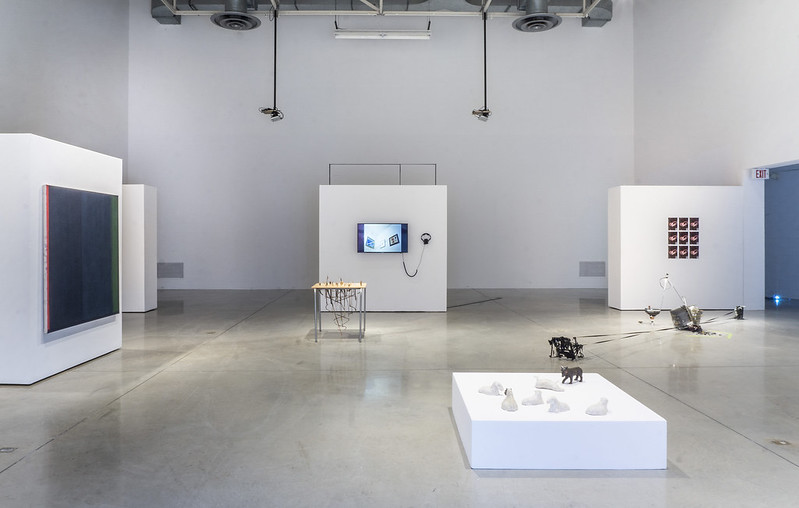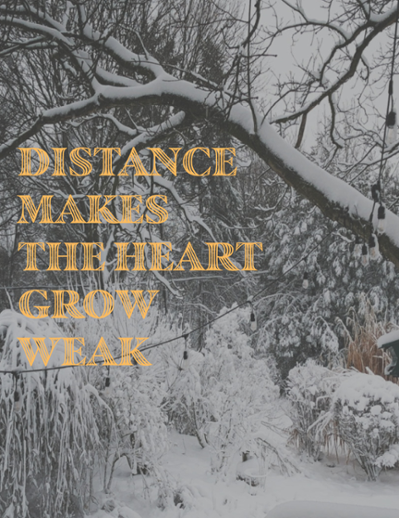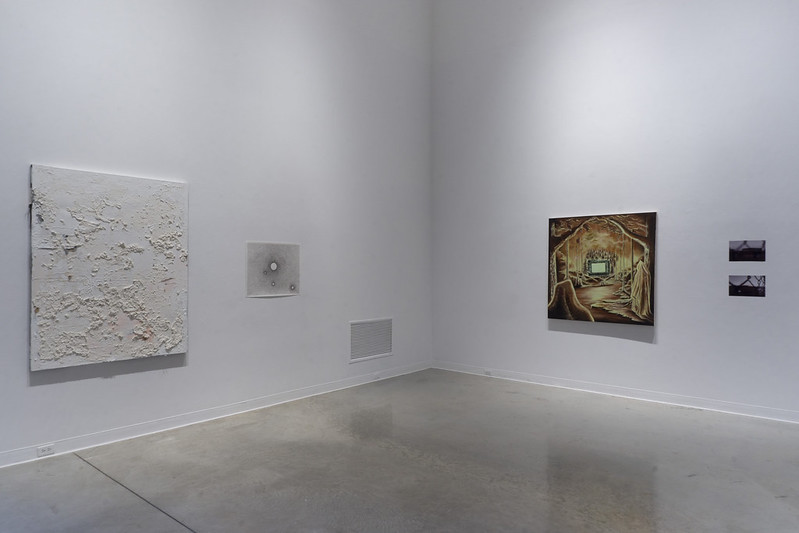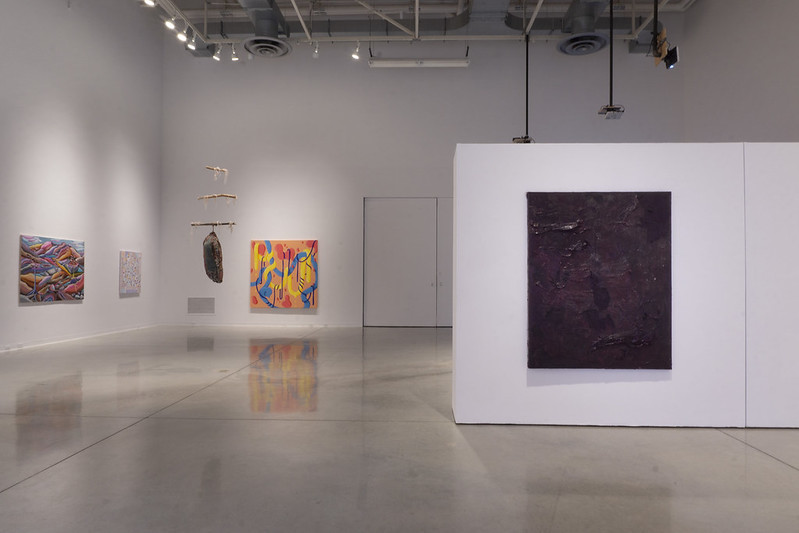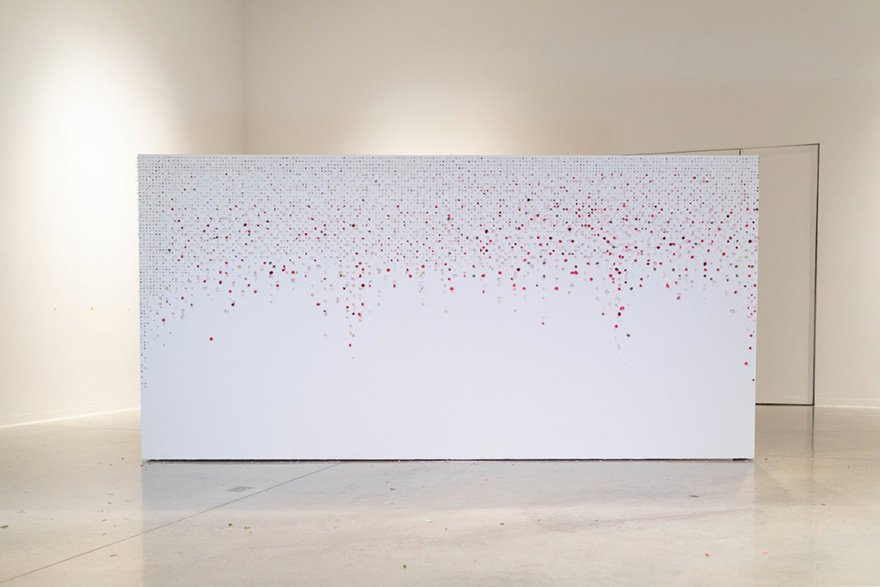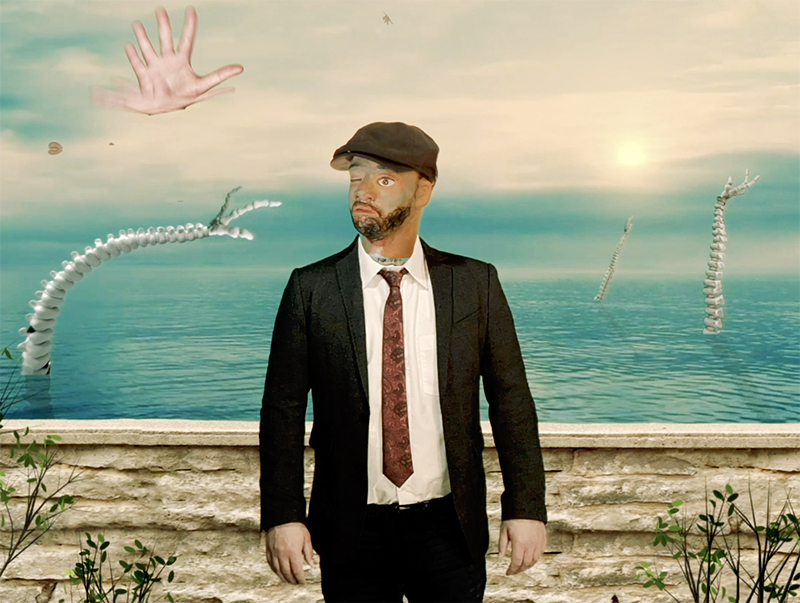Artlab 2020-2021
Fall 2020
We Were, And Then We Weren't.
I-dentify.
http://store.tongue.beautiful.goods.temporary.feet.web
Sepideh Tajalizadeh Dashti: To Be Me
Everyone Here Has Something in Common
...And on That Day, I Went for a Walk
Transitions: A virtual exhibition for SA 2652A Intro to Digital Photography
Winter 2021
Distance makes the heart grow weak
Symphony of Lights: An Exploration of Stained-Glass Windows in St. John the Evangelist Anglican Church, London, ON
AJE19: close for comfort
No Thanks, Just the Cheque
Spring/Summer 2021
Matt W. Brown: On Ground
His House Will Leak
Rebecca Sutherland: Fleet
Tommy Bourque: Marvelous Monsters
Anahí González: The Other Neighbour of El Otro Lado
|
|
Midway through September, certain locations and services on Western's campus were forced to close to the public in the efforts of community health and safety. Among these spaces was the Artlab Gallery, which had just opened the exhibition We Were, And Then We Weren't by fourth-year BFA Practicum Students. In this digital publication, exhibiting student and Artlab Intern Sam Wagter recounts the group's collective challenges during the COVID pandemic: creating work through the summer at a distance, organizing a public exhibition, and then having that exhibition unexpectedly shutter to the public. Wagter also offers useful strategies for cultivating creativity in our present crisis.
<- back to top
http://store.tongue.beautiful.goods.temporary.feet.web
Monday, October 5 - 15, 2020
Anahí González, Rebecca Sutherland, Declan Hoy, Tommy Bourque, Faith Patrick
An exhibition of works by the Department's second-year MFA candidates, featuring photography, sculpture, video, and installation pieces. 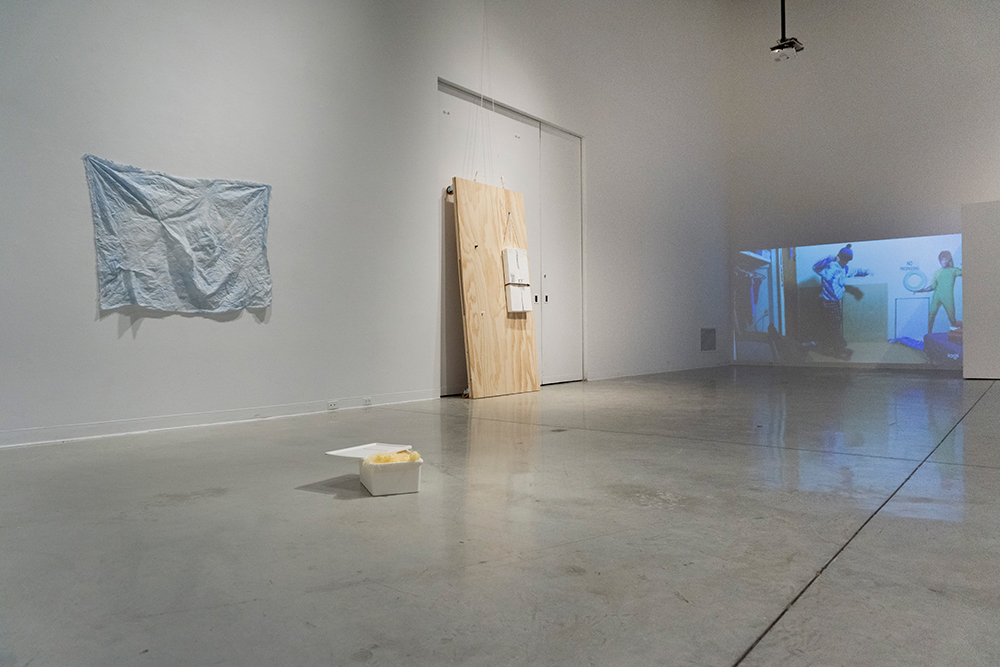
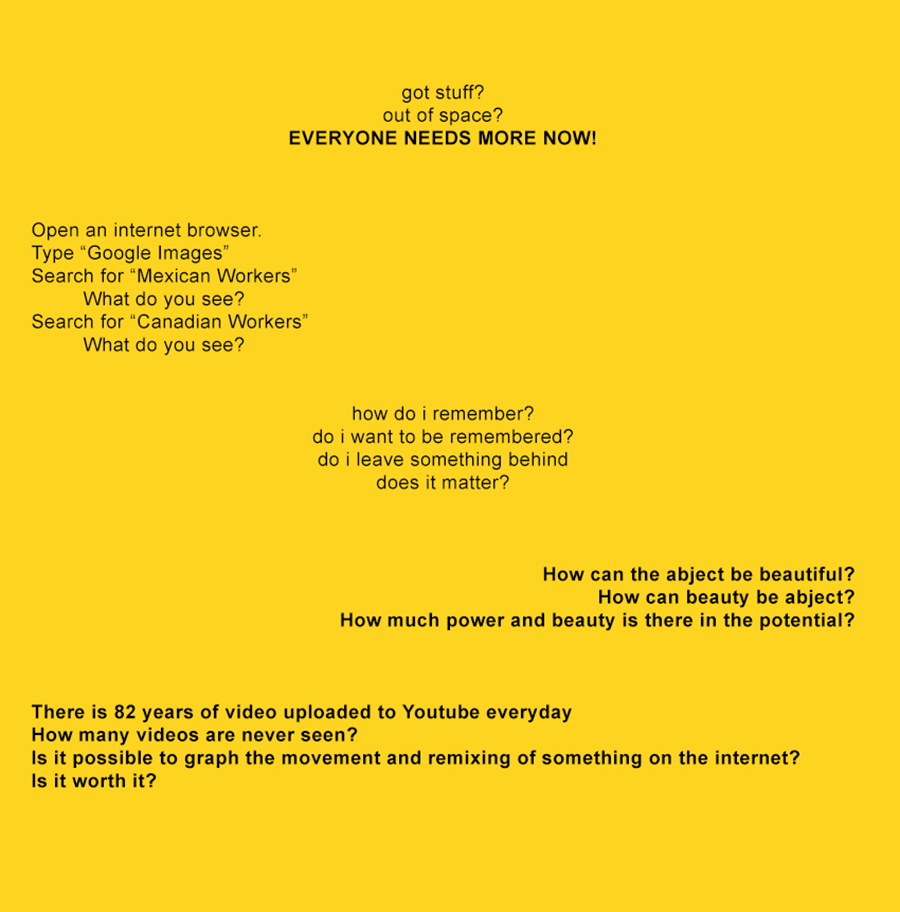
Sepideh Tajalizadeh Dashti: To Be Me
Monday, October 26 - November 12, 2020
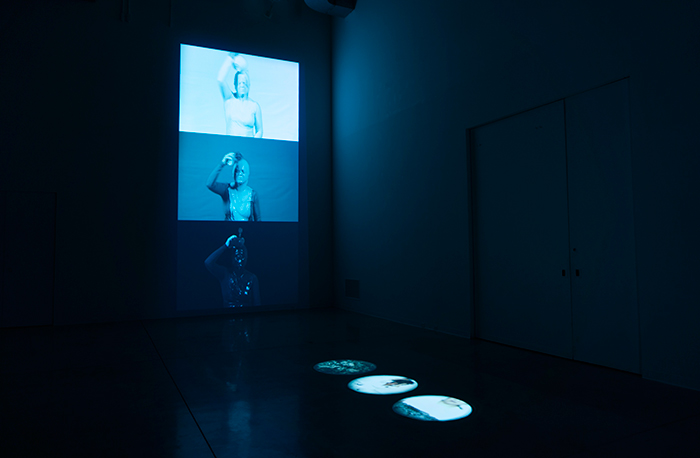
“Out beyond ideas of wrongdoing and rightdoing there is a field. I will meet you there.” —Rumi
There is something inside each one of us that, sometimes, is impossible to explain and define in precise words. However, this ambiguous something exists and acts. Sepideh Tajalizadeh Dashti, an Iranian woman who grew to adulthood in Iran and who now resides between Canada and the United States, has experienced deep feelings of ambiguity in her encounters with different cultural and social expectations.
Not all diasporas are the same. Not all female experiences of oppression are the same. Dashti’s experience as an Iranian diasporic woman is fragmented along ethnic, religious, social, political, and class lines. These fragments pose challenges to her attempts to bind with others and find solidarity based in multiculturalism and ethnicity. Dashti establishes her body as an integral material in her art practices to make the explanation of her experiences and challenges possible. She seeks to claim her body across multiple media of performance, video, and installation. Dashti focuses on traumas that underscore both personal experience and engagement with larger sociopolitical structures of the phallocentric systems that exist in both her homeland and her host countries.
Representation is a crucial location of the struggle for any exploited and oppressed bodies asserting subjectivity. Dashti insists on reminding us to work against the silence and erasure of traumatic experience. “To Be Me” features contemporary representations of Dashti’s Iranian and immigrant identity formation. Works within this MFA thesis exhibition relay the immense struggles of living between places and cultures. Dashti explores her identity in the hope of calling oppressive authorities into question. Perhaps there is not much hope for a bright future where differences are recognized without eliminating the voices of others. But striving to make this future fosters hope-—both to endure and to continue.
Everyone Here Has Something in Common
November 23 - December 3, 2020 in the Artlab Gallery
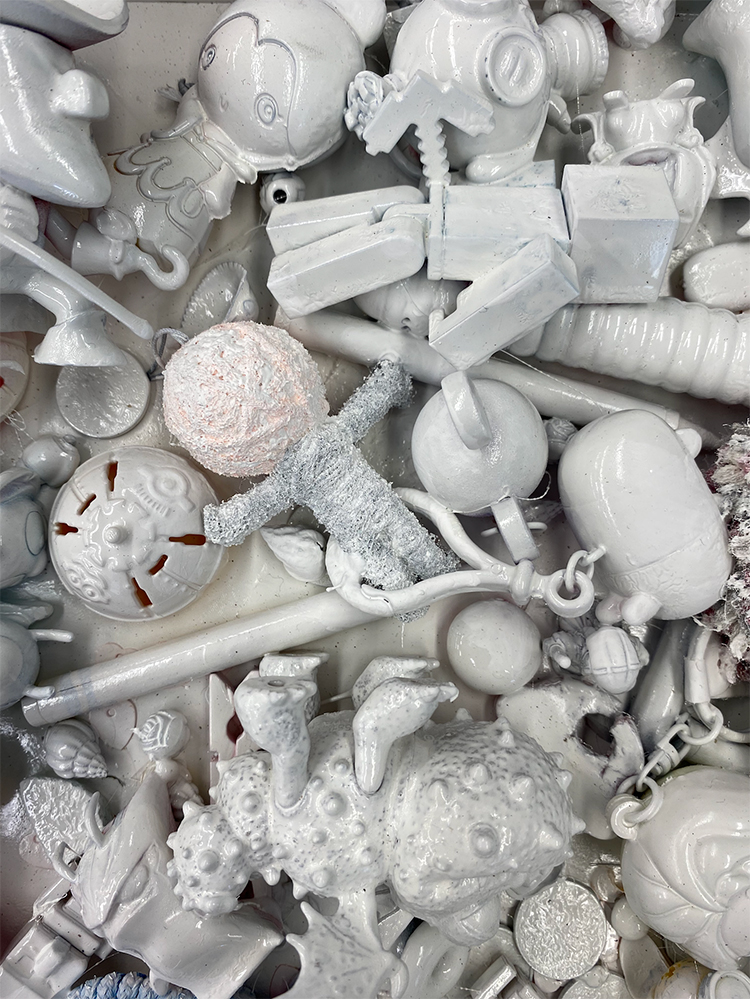
Image courtesy of Megan Goddard.
Installation art is an artistic genre that challenges the boundaries of traditional art. The history of installation art dates back to the 1960’s to early 1970’s, in which it provoked a reversal to the modernist sculpture’s relationship with the pedestal. The pedestal disconnected the sculpture from the space or stated its indifference to it, allowing the work to possess independence from its environment. On the contrary, installation art is directed by the space in which it is constructed. Although installation may involve elements of architecture, sculpture, painting, video, photography and performance, it aspired to challenge the limitations of these art forms as well as their institutional settings. Moreover, installation art was an attempt to resist the trend of circulating art as a commodity, something that is transportable and exchangeable.
In this project, students from SA 2643: Introduction to Sculpture and Installation explore ideas of "where are you coming from?" with a focus on "your culture." Here, "culture" is interpreted both as culture in everyday life, as well as more specific historical and ethnic cultural backgrounds. Students explore cultural connections, exchanges, and crossings by using readymades and found objects to create collaborative installations. They are directed to incorporate ornaments, as ornate artefacts have circulated amongst various cultures and have been adapted/hybridized within new cultural contexts throughout history.
Course Instructor: Soheila K. Esfahani
Teaching Assistant: Rebecca Sutherland
Shannon Boast, Charlotte Cao, Cauchi Rayne, Maggie Charbonneau, Julia Fawcett, Chloe Gatti, Megan Goddard, Emma Hennessy, Chelsea Hitchen, Josette Joseph, Lauryn Kell, Madison Kelly, Wesley Macpherson, Emma McInnes, Darcy McVicar, Linjing Qian, Aly Rana, Lara Stamenkovic, Laryssa Stoetzer, Hailey Watson, JoAnna Weil, Ava Wright
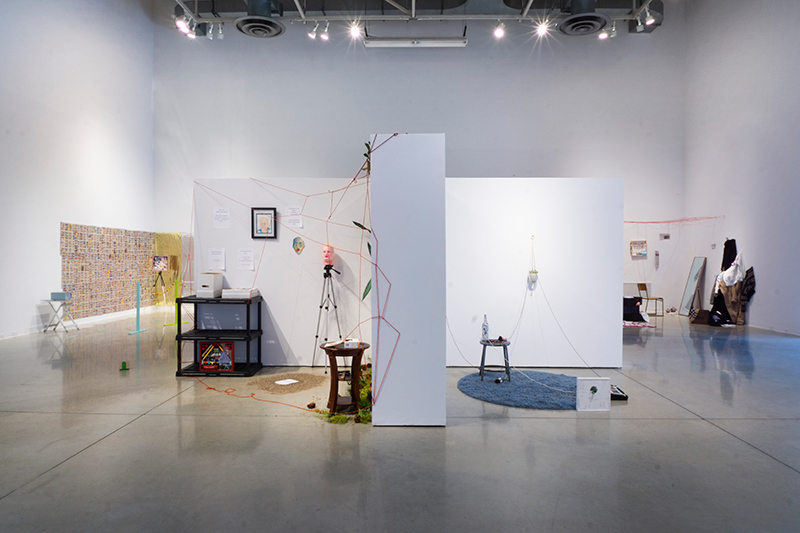
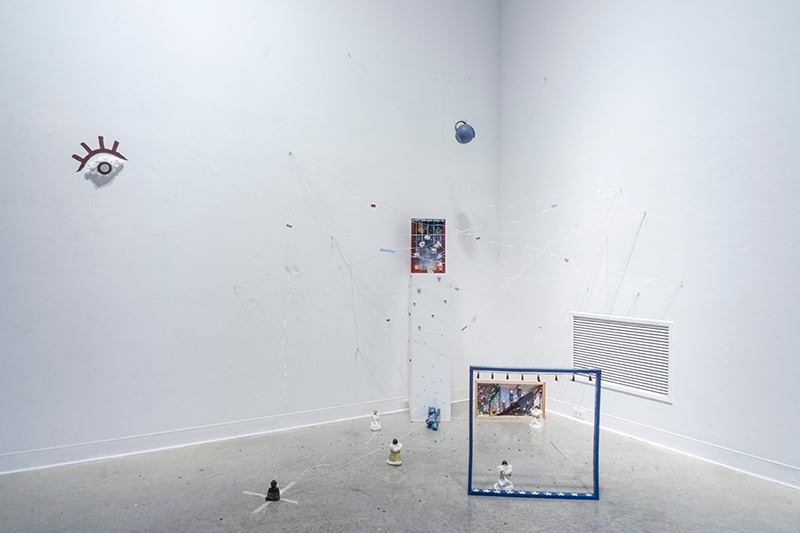
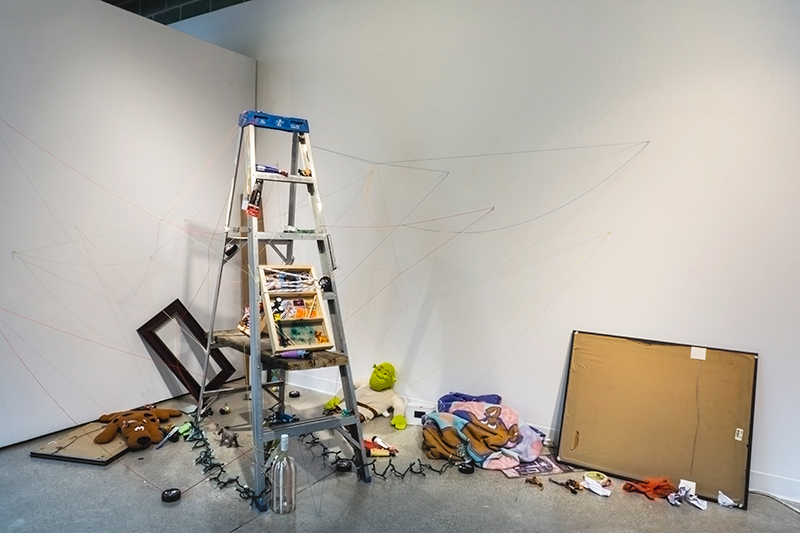
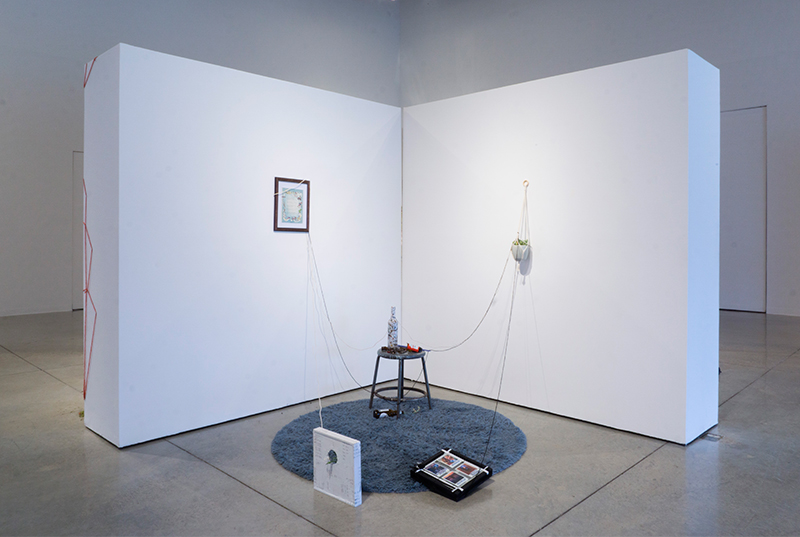
...And on That Day, I Went for a Walk
A Virtual Exhibition by students in SA 2602A: Studio Seminar
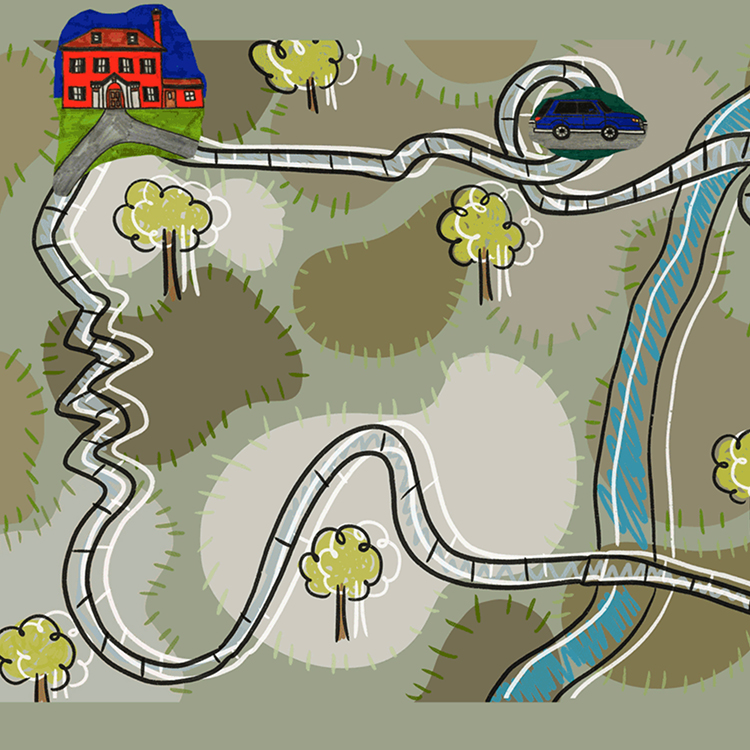
Image from "This is a Dérive," courtesy of Makenzie Marie Ermel, Megan Lynn Goddard, Clementine Leong, and Noelle Mahoney
Diverted from destinations we went for a walk. Stirred by Ólafur’s Eliason’s Institute of Spatial Experiments, walking alongside the ghosts of Guy Dubord and the Situationists, we set out to explore thinking doing, to let slip the screens of charts and maps, and seek the open. Some ventured in groups, some alone; some during day, some during night; some guided by curiosity, some by the deflecting directives of Dérive apps uploaded to smartphones. We brought back personal notation of our encounters to share in small groups before individually fashioning artworks in response. The pieces presented here comprise a final rounding— a yield of three collaborative digital works formed from intersecting paths.
Interactive pdf of the exhibition (best viewed on a standard monitor), or view all three works below.
Course Instructor: David Merritt
The Universal Taco
Caroline Bridget Kathleen O'Regan, Hailey Watson, Abbygale Shelley and Tyme Thompson
A video that gives insight to the absent-minded individual as they scroll through the different social settings and interactions with others across multiple social media apps during a philosophy lecture.
This is a Dérive
Megan Goddard, Clementine Leong, Noelle Mahoney and Mackenzie Ermel
How does one create the feeling of a walk in a digital setting? This web page is built to reflect those feelings. Created from multiple experiences, this web page shows important images from these walks, as well as audio that can be interacted with.
A Little Spot in my Mind
Holly Granken, Lara Stamenkovic, Karlee Pattenden, Liv Pattison, and Isabella Springett

Transitions.
A virtual exhibition for SA 2652A Intro to Digital Photography
On January 1st, 2020, we transitioned into a new decade and a new era. Eleven months later, we know this was just the beginning of the transition society would experience in 2020.
In this virtual exhibition, students from SA 2652A: Introduction to Digital Photography explore ideas of transition and what they mean for our past, present, and future. Their works collectively examine thinking paths about transitions related to various themes: cultural, social, environmental, political, and technological.
Course Instructor: Jennifer Martin
Teaching Assistant and Curator: Anahí González
Skye MacKenzie Gibson, Yuqing Chen, Lilianna Thornton-Nickerson, Nicole Traher, Brooklyn Lorraine, Maya Fernandez, Justin Mulder, Yi Zhou, Ava Gossen, Liuyi Cheng, Isabella Elisa Springett, Lauryn Kell, Leo Rao, Michael James Harrison, Man Nga Ting, Runjia Huang, SiHyun Vision Kim, Wasef Al Shaikh Yasin, Victoria Khounbourinh, Hongji Weng, Lan Wei, Angie Allen-Demaria, Yumeng Chen, Jennifer Guo, Sofia Bernyck
Distance makes the heart grow weak
January 15 - 28, 2021 in the Artlab Gallery and virtually
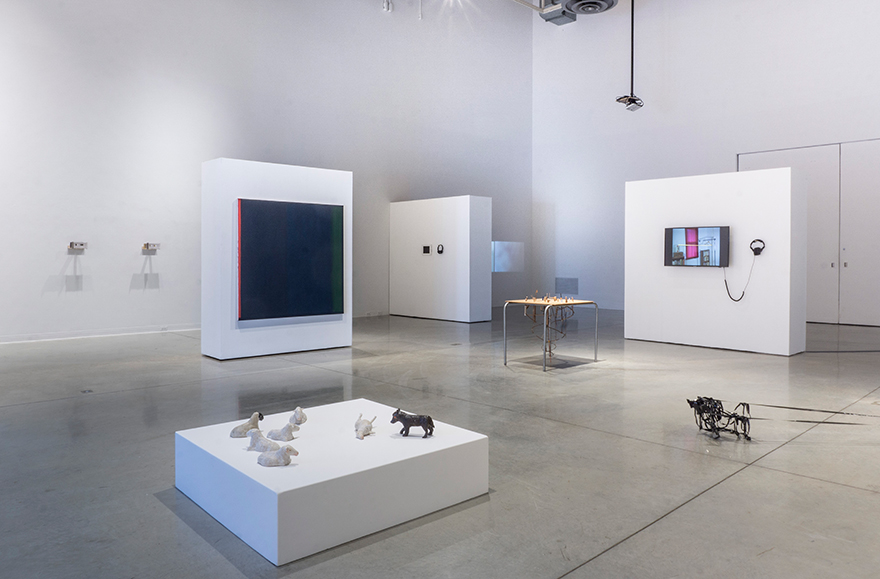
Ioana Dragomir, Philip Gurrey, Geordie Shepherd, Jérôme Conquy w/ Kevin Heslop and others, Jennifer Martin, David Merritt, Sasha Opeiko with Martin Stevens, Dong-Kyoon Nam.
Every few years, the Artlab Gallery at Western University hosts a Faculty and Staff exhibition. These exhibitions are important opportunities for fostering a sense of community in the Visual Arts Department: students are able to see their instructors and mentors at work, and colleagues have a chance to share in each other's research. 2020 was a year like no other, and so the Artlab is leaning into the present with a collective address to this moment of separate togetherness. "Distance makes the heart grow weak" invites faculty, staff and graduate students to speak to how they've been experiencing the last year. It prompts participants to explore and express how isolation has shifted our focus, our research and art practices, as well as our forms of connecting with one another. The exhibition is also an opportunity for participating artists and researchers to show flexibility (and inherently, optimism) despite the high strangeness we’re all currently experiencing. In this time of shared solitude—unable to walk down halls, knock on studio or office doors, and enjoy quick hellos and impromptu conversations—we'll quote Chris Kraus (quoting Søren Kierkegaard): "art involves reaching through some distance."
Organized by Dickson Bou and Ruth Skinner.
Participants: Cody Barteet; Sarah Bassnett; Dickson Bou with Charlie Egleston & Peter Lebel; Matt W. Brown; Andreas Buchwaldt; Brianne Casey; Jérôme Conquy with Kevin Heslop, Sachiko Murakami, Sile Englert & Ruth Douthwright; Ioana Dragomir; Meghan Edmiston; Soheila Esfahani; Sky Glabush; Anahí González; Philip Gurrey; John Hatch; Tricia Johnson; Iraboty Kazi; Shelley Kopp; Anna Madelska; Patrick Mahon; Jennifer Martin; Linda Meloche; David Merritt; Ana Moyer; Dong-Kyoon Nam; Kim Neudorf; Katie Oates; Sasha Opeiko with Martin Stevens; Michelle Paterok; Kirsty Robertson; Geordie Shepherd; Andrew Silk; Ashley Snook; Christine Sprengler; Michelle Wilson with Bridget Koza,Sophie Wu, & Azadeh Odlins; Jessica Woodward
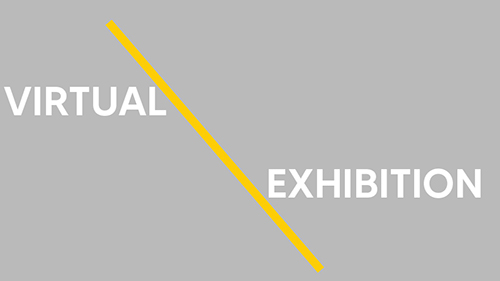 Access the virtual exhibition component of Distance makes the heart go weak for artists' statements, artists' videos, research publications, exhibition documentation, and video features. [external site]
Access the virtual exhibition component of Distance makes the heart go weak for artists' statements, artists' videos, research publications, exhibition documentation, and video features. [external site]
Video walkthrough of the exhibition (4:41)
Symphony of Lights: An Exploration of Stained-Glass Windows in St. John the Evangelist Anglican Church, London, ON
February 8th - 19th, 2021
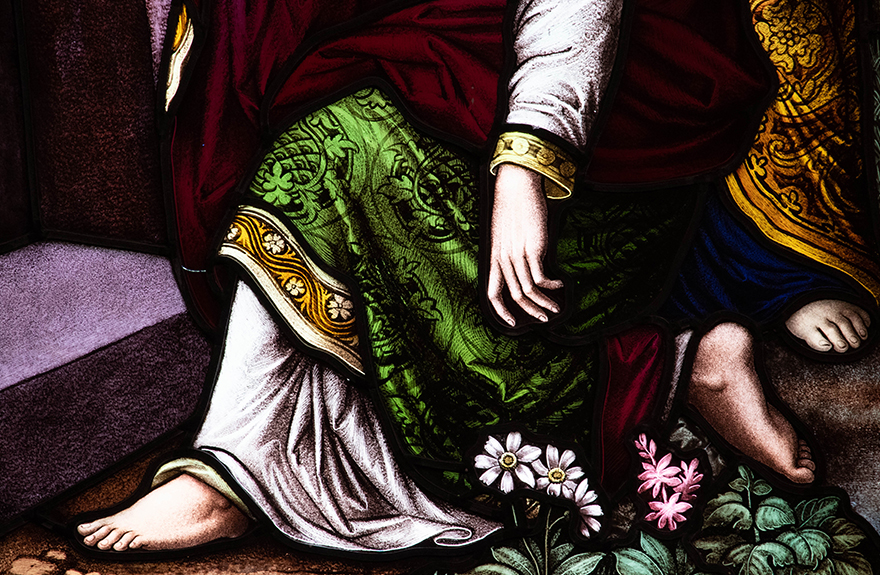 Image courtesy of Anahí González
Image courtesy of Anahí GonzálezCurators: Iraboty Kazi and Anahí González
Editor: Dr. C. Cody Barteet
“Give light, and the darkness will disappear of itself.” - Desiderius Erasmus
This exhibition explores the visual and aural sensations of being inside St. John the Evangelist Anglican Church in London, Ontario. The parish community was founded in 1864. The present Gothic-inspired church (at the corners of Wellington and St. James Streets) was begun in 1888 and has remained an important feature in London’s Old North community for well over a century. Now part of the Bishop Helmuth Heritage District the church and its facilities are a hub of activity for the community.
The videos and photographs taken by artist Anahí González during visits to the church inspired our explorations of the stained-glass windows in relation to art and local history. Stained-glass windows that adorn the neo-Gothic building connect the church’s ambiance to medieval practices, reinforcing a line of contact from ancient history to our own. At the same time, the dynamic shifting of light based on the hour of the day is a reminder of the ephemeral beauty of our daily lives. We also explore the play between light, sound, and their effects on the visitor with recordings of bells and organ music played in St. John the Evangelist church.
Symphony of Lights focuses primarily on four fascinating ecclesiastical windows created by London- and Toronto-based artists and workshops: Meikle Stained Glass Studio, Sunrise Studios, Yvonne Williams, and Robert McCausland Limited. Combining modern technology with historical windows allows for exploration of the varying styles, techniques, colours, artist signatures, and details that would otherwise be overlooked.
This exhibition is a part of Dr. Cody Barteet’s research program: Preserving the Cultural and Artistic Heritage of St. John the Evangelist, London, Ontario as a Model for the Anglican Diocese of Huron, a project funded by the University of Western Ontario.

Artist's tour of the exhibition by Anahí González.
AJE19: close for comfort
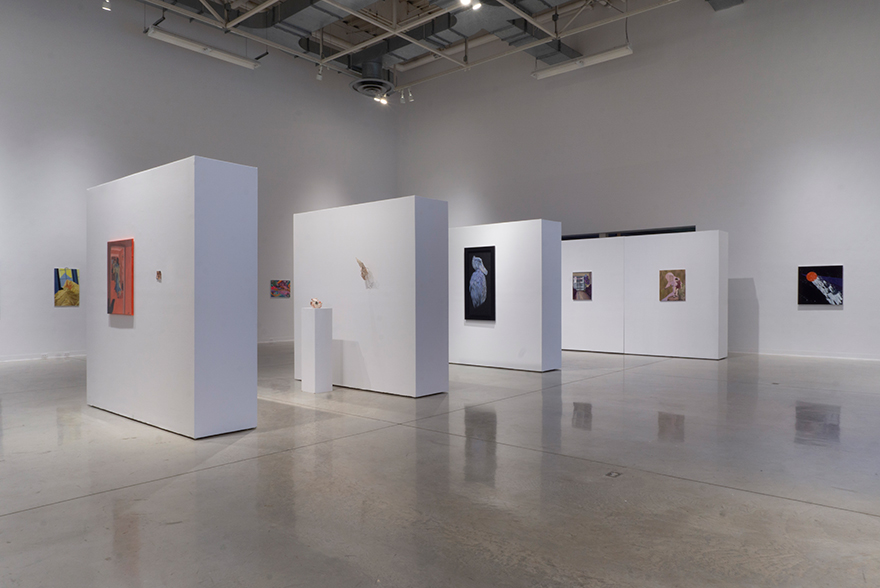
March 5 - 18, 2021
Artlab Gallery & Chohen Commons
How to talk (or not talk) about that one thing we all have in common;
or, pocket questions to use with others after one year in isolation.
Sidle up to another person and begin small talk:
Ahem.
What have we been up to?
How do we answer that?
How do we make a joke?
How do we share a groan?
What do we look like?
How do we listen?
How do we sound?
Have we watched that yet?
What's that smell?
Are we talking about the same thing?
Why are you looking at me like that?
Why am I looking at you like that?
Why is this so hard?
How is this so easy?
Wanna meet up later?
The Annual Juried Exhibition returns for its 19th consecutive year as one of the most highly anticipated undergraduate exhibitions in the Visual Arts Department. This event supports the production of new work made in a variety of media, including painting, sculpture, digital media, photography, installation, sound, and performance. Artworks were selected by a professional jury who consider originality, creativity, and process. AJE 19: close for comfort represents a diverse selection of work from all levels of undergraduate study in the Department. Despite our unusual (shared) circumstances, we received a significant number of submissions for this year's exhibition. These works speak directly and indirectly to living, thinking, feeling, and working one's way through a thing. With this in mind, the organizers have paired works together, closely, to jump-start some conversations.
Shane Ackerley, Zaynab Almayahi, Tia Bates, Laura Butler
Maggie Charbonneau , Abraham Chavez, Meagan Dennis
, Krista Ewer Vantol, Stephanie Fattori, Julia Fawcett, Julie Fishbaum, Cosette Gelinas, Aisha Hassen, Skyler Hayes, Kaitlyn Hwang, Crystal Lam, Rowan McCready, Melanie Pare, Elizabeth Prebushewski
, Bridget Puhacz, Shelby Sammut, Chloe Serenko, Abbygale Shelley, Ashley Staines, Aidan Takeda-Curran, Megan Man Nga Ting, Lucy Villeneuve, Sam Wagter, Abby Walters, Jade Williamson
Jurors: Teresa Carlesimo (Forest City Gallery), Anna Madelska (Faculty member), Shannon Taylor-Jones (Satellite Project Space), Dickson Bou and Ruth Skinner (Artlab Gallery)
Image: Chloe Serenko, Low Battery (digital video).
Virtual walk-through of the exhibition, narrated by Gallery Manager Ruth Skinner.
Download the Gallery Map, with list of works and artists' statements, here.
March 29 - April 8, 2021
Artlab Gallery & Cohen Commons
“Did you save any room for dessert over here?”
We’re confronted by the question that imposes the end of our four-year feast. A question that acknowledges the end of four years of development, four years of discovery, four years of community. We’ve come this far knowing with certainty that we would end up here, confronted with this decision. It’s now that we know with absolute certainty, that we can answer this question confidently.
“No Thanks, Just the Cheque.”
This year’s Practicum Class exhibition, No Thanks, Just the Cheque, accumulates recent works of 21 artists created during the 2020/2021 term. This exhibition also serves as the cumulation of the work that these artists have put into developing their individual practices over the course of their experiences in the Bachelor of Fine Art’s program. No Thanks, Just the Cheque signifies the end of a journey taken into the BFA program.
Tia Bates, Laura Butler, Natalie Chevalier, Peter Dickson, Rachel Elias, Sam Erdelyi, Skye Gibson, Hualei Gu, Aisha Hassen, Kaitlyn Hwang, Jimin Lee, Mackenzie Smith, Ashley Staines, Lili Thornton-Nickerson, Helia Trinh, Felicia Vosberg, Sam Wagter, Jade Williamson, Janelle Wilson, Courtney Wong, Joy Zheng
View a digital version of the exhibition's complementary catalogue, No Thanks, Just the Cheque.
---
Following Ontario's provincewide lockdown (beginning on April 3), the Artlab will be closed to in-person appointments. For ongoing coverage of COVID-19 protocol and operations at Western University, visit https://www.uwo.ca/coronavirus/
View a video tour of the exhibition, narrated by Artlab Work Study student Fernanda Recinos.
On Ground
Matt W. Brown
April 19 – May 7, 2021
Artlab Gallery
This series of paintings began as an effort to locate myself during a period of profound grief over the loss of my son, Ellis. Up until that time, I had been making drawings on the wall, but then loss tore through my life and suddenly the floor became my new workspace. I no longer stood erect to work on a vertical plane, but instead from my knees working horizontally. I folded paper into trays to contain coloured water and would wait for days to see what kind of patterns the evaporating water would leave behind on the paper’s surface. I would often spend time watching the suspended pigments mix in the water or sit and stare at tinted reflections of myself and my surroundings in the chromatic pools. I was becoming more of an observer as I distanced myself from the work. I allowed the materials I was using to act more autonomously under the laws of nature.
As the application of paint to paper was now mediated by evaporation over time, I realized that my hand was no longer directly involved in manipulating paint strokes but was rather most present in the folds I pressed into the papers’ surface.
A fold is a weakness, a wound running along the entire length of the substrate. A fold is a doubling over, a bend that leaves a scar. A fold is a condition that forces one thing to become something else. A fold is an awakening, showing an object in the second dimension that there is perhaps a third.
Through evaporation, these paintings are what remains of an imminent departure, something akin to empty containers, wrappers or envelopes. The water responsible for the markings left behind on the paper surface is removed, its invisible presence as vapour now called to mind through trace.
While these paintings were unquestionably born out of the numbness of grief after loss, they are also manifestations of a long-standing interest in process-based actions and outcomes. These paintings are a way of poking and prodding the environment around me in order to locate myself in a world in flux.
About the Artist
London artist Matt W. Brown explores incidence, colour, and implications of transition through works on paper. He has exhibited in Halifax at the Nova Scotia Archives, Anna Leonowens Gallery, RBC Waterside Centre, Eyelevel Gallery, and the Visual Arts Nova Scotia Corridor Gallery. In London, his work has been featured at Fringe Gallery, Forest City Gallery, Artlab Gallery, and McIntosh Gallery.
Brown received a Bachelor of Fine Arts from the Nova Scotia College of Art and Design with a major in painting. He is now completing a Master of Fine Arts degree at the Department of Visual Art, Western University.
Video tour of the exhibition narrated by Matt W. Brown.
His House Will Leak
Sarah Charette, Ioana Dragomir, Philip Gurrey, Ana Moyer, Dong-Kyoon Nam, Sasha Opeiko, Tessa Oxtoby, Elena Solomon
April 19 – May 7, 2021
Cohen Commons
“In my telling, the Cyclops’ story is a revenge story….
While Odysseus is happily restored at home and publicly celebrated, the Cyclops’ story continues. She walks the vastness of his kingdom, slowly becoming a ghost. Her emptied socket becomes a mask. Her revenge feeds her, making her opaque, anti-gravity, a black hole. Odysseus is blind to her, no longer able to see the Cyclops as when he coveted her land and food. She hides in plain sight and crafts her haunting. She will orphan Odysseus as she has been orphaned, but not of family, land or body. She will strand Odysseus in constant unease, bereft of his cherished and clever reason. His house will leak. The walls will sag. He will dream of sheep. He and everyone around him will forget his name; he will become an unremarkable shadow of Nob’dy, the clever alibi and source of his fame.”
Eve Tuck and C. Ree. “A Glossary of Haunting.”
His House Will Leak is created by students in Professor Kirsty Robertson's graduate seminar, "Museum/Decay."
Video tour of the exhibition narrated by Ioana Dragomir.
Fleet
Rebecca Sutherland
May 25 - June 11, 2021
What do we lose through our continuous pursuits of permanence?
What might we be missing along the way?
Fleet makes use of floral material deemed commercially undesirable in a poetic and inventive collaboration with the passage of time and the shifting qualities of lived and imagined spaces.
Cooperating with the exigencies of time, the works in the exhibition highlight ceaseless movements towards inevitable forms of decomposition, pointing to the inherent delicacy and fragility of the natural world, and invoking similarities with human experience.
Here, reclaimed floral material is subjected to repetitive processes and forms of labour as a counterpoint to being left to naturally decay. These intentional processes transform the material at a stage prior to an expected moment of wilting and dissipation. Sometimes the petals are presented as themselves, mediated by repetition.
To engage with the impermanence of ephemeral materials is to allow the passage of time to play a significant role in the production of the work. The works in Fleeting enact processes of decay and deterioration, engaging with natural systems as real, as opposed to illustrative. The cyclical nature the works manifest from the studio into the gallery: in some instances a previous work’s dried petals are collected and manually ground into powder that is then repurposed within the installation.
Working with an ephemeral yet materially focused practice, the artist questions, “Why do we strive for permanence? Does this change how we interact with art? And how are we ever able to make peace with the fleeting nature of life?”
Video tour of Fleet from Rebecca Sutherland on Vimeo, produced by Anahí González and Tommy Bourque.

Photographs by Anahí González.
Marvelous Monsters
Tommy Bourque
June 25 - July 16, 2021
Marvelous Monsters presents speculative worlds and speculative figures. This immersive exhibition of installation works by Tommy Bourque evokes physically and psychologically visceral feelings of tension through dynamic, antithetical and aesthetical relationships. Constructed scenarios present subtle and extreme opposites. Sculptural objects and bodies are complemented or animated by digital technology to explore aspects of the (post)human and provoke emotional responses in viewers to contrasting effects, inspiring ambivalence or confusion.
To what extent can we relate to experiences that purposefully elicit adverse and emotional continuums of sensations? Bourque’s scenes are investigations for considering the viewer’s reactions when faced with familiar—yet deconstructed—vessels in which they, too, reside. Visitors are presented with a dilemma of contrasting signifiers and must consciously negotiate the works while discerning their relationships with their own bodies. The fragmented body is the foundational core of Bourque’s practice, and the synecdoche is central, even (or especially) when it is overtly abstracted: (re)enforced by teeth, hair, heads, spines, and/or limbs. Viewers encountering these scenes may succumb to their individual physical reflexes, natural bodily reactions, and unconscious drives.
André Breton asserts in the Manifesto of Surrealism (1927), “[T]he marvelous is always beautiful, anything marvelous is beautiful, in fact only the marvelous is beautiful.” In this regard, Bourque views his sculptural creations as both monstrous and marvelous, as wonderfully frightening. Each piece exemplifies the same overall goal of his practice: Bourque wants his work to mirror what it is like to be alive. He wants viewers to connect and engage with his work to confront their understanding of their own embodiment and of their own lived experiences as bodies and in bodies.
View a digital tour of the exhibition above, and a floor map of the exhibition.
Read Ana Moyer's accompanying exhibition essay, "Sentient Surrealism: Examining the Postmodern Art of Tommy Bourque."
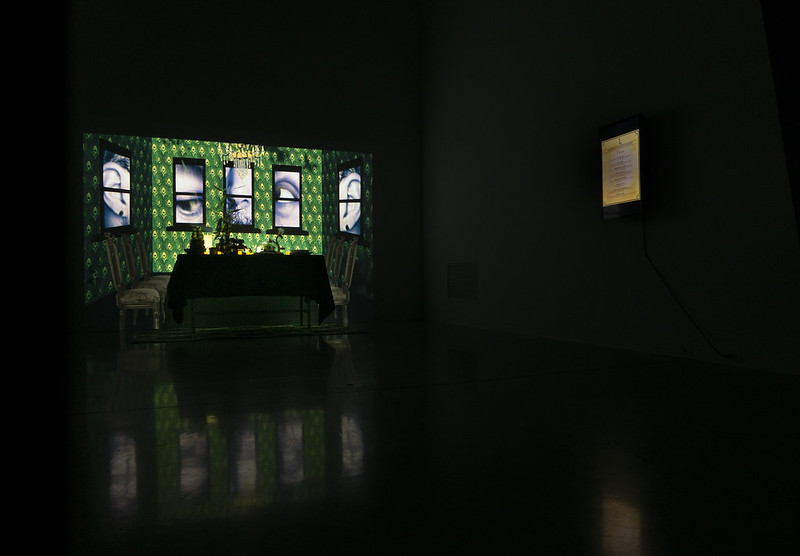
<- back to top
The Other Neighbour of El Otro Lado
Anahí González
August 3 - 20, 2021
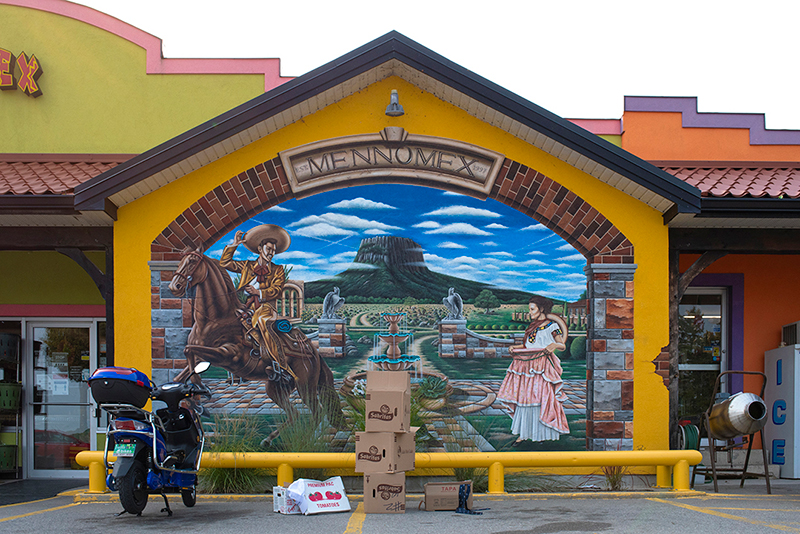
The Other Neighbour of El Otro Lado explores themes of Mexican migration in Canada, engaging with ideas of human labour and various indexes of Mexican culture, trade, and economic exchange. With two simultaneous exhibitions in two locations: the Artlab (London, ON, Canada) and El NODO (Saltillo, COAH, Mexico), the show echoes the importance of creating a visual narrative between both countries to decenter the United States narrative concerning Mexican migration.
Working with cardboard boxes from Latin Markets in Ontario as a sign and cipher of an absent subject of labour, González brings attention and critiques to how the system of powers perceives Mexican labour as mobile, multi-purpose, temporary, and disposable.
To see both exhibitions virtually, visit www.theotherneighbour.com
Anahí González is a Mexican photographer based in London, Ontario, where she is completing her MFA in Visual Arts at Western University. She explores alternative visual narratives related to Mexican migrants and labour in Canada.
González received her BA in Communication Studies from the Universidad del Valle de México in 2016. In 2017, she worked as a cinematographer with the Mexican director Busi Cortés for a research documentary funded by the CEIICH-UNAM. Her work has been presented in exhibitions and screenings in Mexico, Norway, Canada, Spain, and France. The Other Neighbour of El Otro Lado is her graduate thesis exhibition. Visit the artist's website.

View a floor map for the exhibition here.

Artist and Western PhD candidate Andreas Buchwaldt explores the geographic and sociopolitical contexts of Anahi’s work in an excellent essay, available to read here. Responding to Anahi’s subject matter, Andreas has designed the text to interface with a cardboard box. The essay has been translated into Spanish by Western PhD candida Maria Laura Flores Barba (Dept of Languages and Cultures).

